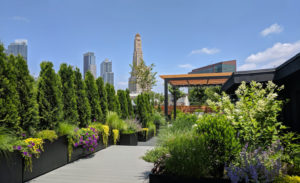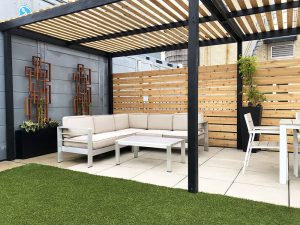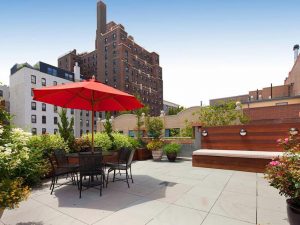
If planting a roof garden seems daunting, here are a few tips to help get you on your way to creating an urban paradise:
CHECK BUILDING CODES
Before starting a garden, check with the building superintendent to see about building codes and weight limits.
USE APPROPRIATE CONTAINERS
Containers should be lightweight and portable, resist cracking in freezing weather, and hold enough soil to minimize the drying effects of wind and sun.
INSTALL AN IRRIGATION SYSTEM
In the heat of summer, plants exposed to a full day of sun and wind may need constant watering and can easily burn to a crisp if forgotten about for even a day.
KNOW YOUR CONDITIONS
The intense sun, wind, and freezing temperatures on a rooftop can be a full zone or two different than that on the street down below. A temperature gauge can help to determine whether or not you’re gardening in the arctic or the Sahara.
CHOOSE THE RIGHT PLANTS
Buy smaller-leaved plants that won’t get torn apart by the wind. Plants should also be able to tolerate a wide range of temperature extremes. Conical-shaped trees tend to do better and won’t get blown over by wind.
DESIGN FOR SEASONAL INTEREST
If you can see the garden from indoors, it’s a good idea to mix evergreens with annuals and perennials in the same planters so you will have colorful blooms in warmer months and something green to look at when the weather turns frosty.
PROTECT PLANTS FROM THE ELEMENTS
Stabilize evaporation rates and freeze-thaw cycles by applying a 2-3″ layer of mulch to your containers.
SPRING CLEANING ESSENTIALS
Over time, the soil in your containers will start to decompose and lose its nutritional value. Remove the top 1-2″ of soil from containers each spring and add fresh soil to reinvigorate plants.
FERTILIZE, FERTILIZE, FERTILIZE
Plants in containers eat up fertilizer much more quickly than plants in the ground. During periods of active growth, you should plan on fertilizing every two weeks for blooming and fruiting plants and once a month for all others.
PRUNE AND DIVIDE
Very large plants will need to be pruned or divided every year to keep them from outgrowing their containers. Prune spring-flowering plants after they bloom. Prune all others after the first frost.








